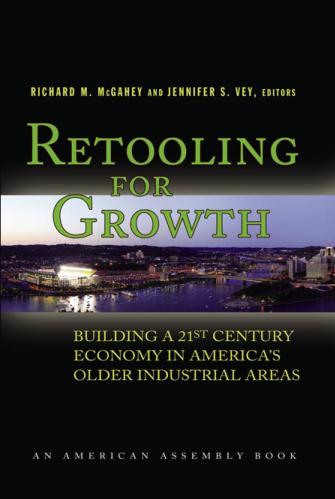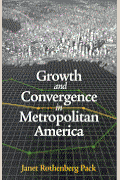Studies in this week’s Hutchins Roundup find that existing research overstates the effect of LSAPs on long term rates, time limits on welfare benefits leave women worse off, and more.
Want to receive the Hutchins Roundup as an email? Sign up here to get it in your inbox every Thursday.
Existing research overstates the effect of LSAPs on long term rates
David Greenlaw of Morgan Stanley, James Hamilton of University of California, San Diego, Ethan Harris of Bank of America Merrill Lynch and Kenneth West of University of Wisconsin say previous research on the Federal Reserve’s large scale asset purchases (LSAPs) overstates their effect on lowering 10-year Treasury yields. Previous work relies too heavily on flawed event studies, they argue. Examining days on which there were pronouncements from the Fed and days on which Reuters attributed bond market moves to the Fed, they find that yields often rose instead of fell on LSAP moves; they also find little evidence of persistent effects on 10-year yields from the unconventional policy. The Fed’s most important and reliable tool remains short-term interest rates, they conclude. Two Fed bank presidents, William Dudley of New York and Eric Rosengren of Boston, sharply criticize the paper. They see the results as an indictment of event study methodology rather than the policy itself.
Time limits on welfare benefits leave women worse off
In 1996, Congress put time limits on welfare benefits, reduced disincentives to marriage, and created stronger incentives to work. Exploiting the variation in the implementation of welfare reform across states, Hamish Low of the University of Cambridge and co-authors find that welfare use fell dramatically and persistently, especially for single women. Before reform, 31 percent of low-educated single mothers were on welfare; afterwards, 8 percent were. Time limits alone induced a fall to 18 percent, they say. They also find that even though time limits bind only after several years, beneficiaries reduced welfare use immediately after the reform, suggesting that beneficiaries plan for the future. In all, the authors conclude that welfare reform left women worse off. Although more women took jobs, only half the women who no longer received benefits were employed. Further, the women relied more heavily on food stamps and on their partners, which, in turn, led to fewer divorces.
Aggregate productivity growth would have slowed starting the 1970s if not for the computer industry
Building a model in which technological progress is both sector- and occupation-specific, Sangmin Aum and Yongseok Shin of Washington University and Sang Yoon Lee of Toulouse School of Economics and CEPR find that aggregate productivity growth has been slowing since 1970s. But, they add, this was offset by extraordinary productivity growth in the computer industry in the 1980s and 1990s. Only when the computer sector’s productivity growth slowed to a more normal pace did the aggregate slowdown become apparent. They present a potential explanation for this slowdown, observing that occupations and industries with high productivity growth shrink in terms of value added and employment shares over time. Thus, their contributions toward aggregate productivity growth decline even when their productivity continues to grow fast. The shrinkage in occupations, rather than sectors, accounts for most of the slowdown in U.S. aggregate productivity, they find.
Chart of the week: Urban-rural disparities in employment have increased post-crisis

Quote of the week:
“I suppose that [with] the type of reasoning that led us to [the] 2 percent [inflation target]–which was partly based on estimates of how often you’d hit the zero lower bound–we’d probably come out with a higher inflation target now if we were starting from scratch. But moving to a higher inflation target is a tricky business. I am not sure Congress would regard it as consistent with their mandate of price stability. The transition from a lower to a higher inflation target would be a difficult one, and could succeed in un-anchoring inflation expectations that I interpret as reasonably well anchored around 2 percent. That’s been a tremendous advantage to monetary policy…So it’s certainly worth considering the costs and benefits, but it’s not a clear ‘yes, we should have a higher target,’” says former Fed Chair Janet Yellen.
“That takes you to other systems like nominal GDP targeting, which has some interesting advantages, or price level targeting. And I think these things are worth considering…I think they’re worth studying, debating, because this is an important issue. Is there a silver bullet there? Something that just obviously is going to work and make a huge difference? I will admit to a little bit of skepticism about that. I think these systems would have to be very well understood by the public, and I think explaining how any of these systems would work to the public is a difficult task.”
The Brookings Institution is committed to quality, independence, and impact.
We are supported by a diverse array of funders. In line with our values and policies, each Brookings publication represents the sole views of its author(s).











Commentary
Hutchins Roundup: LSAP effectiveness, welfare reform, and more
March 1, 2018
Studies in this week’s Hutchins Roundup find that existing research overstates the effect of LSAPs on long term rates, time limits on welfare benefits leave women worse off, and more.